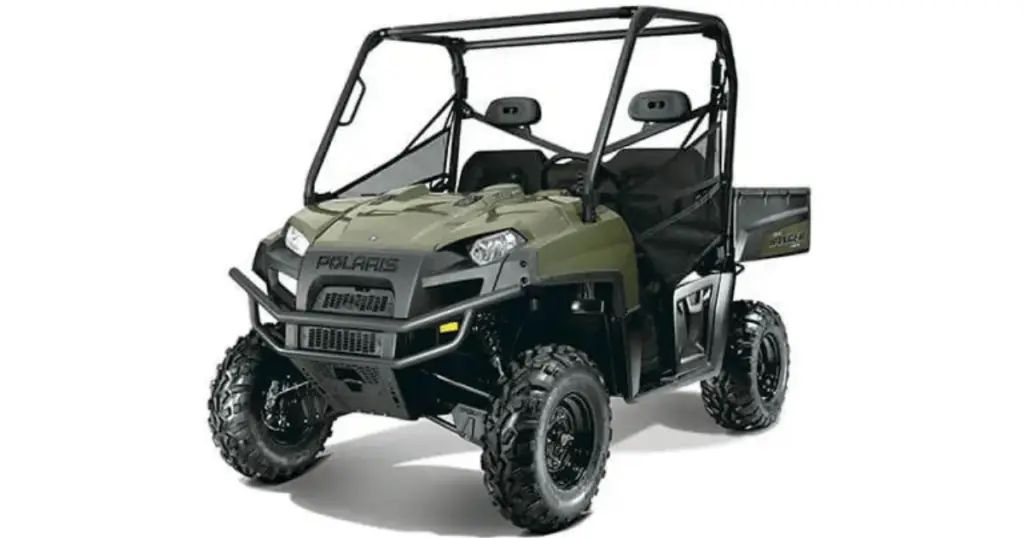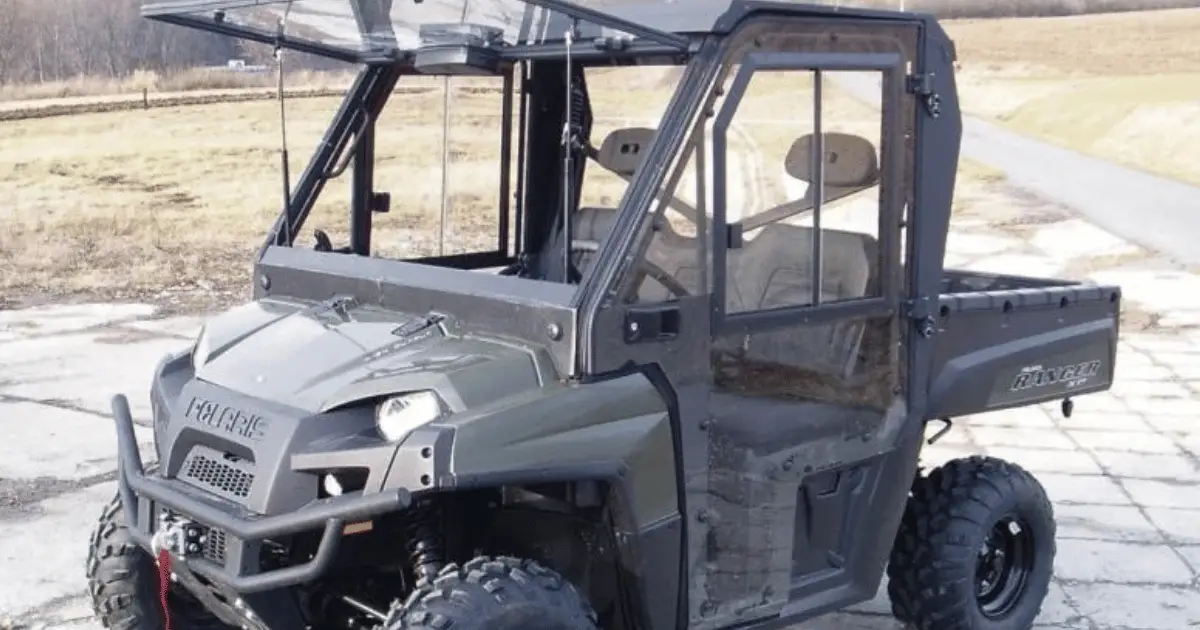Imagine you’re out in the wilderness, the rough terrain ahead of you, ready for a day’s adventure in your Polaris Ranger 800. The last thing you want is engine trouble due to a faulty fuel pump. As a crucial component, the fuel pump ensures your Ranger’s engine gets the fuel it needs to keep roaring across any challenging landscape. But when it fails, you’re left with a powerful machine that just won’t start or, worse, leaves you stranded far from the beaten path. Understanding these common Polaris Ranger 800 fuel pump problems, from pressure irregularities to complete malfunctions, can save you from a ruined day and potentially expensive repairs. Lets get to it, shall we?
Overview of Polaris Ranger 800

So you’ve got your hands on a Polaris Ranger 800 or you’re thinking about getting one — great choice! This model has been quite the deal in the off-road community. It hit the trails with gusto and has been popular since its release. With a reliable engine and the ability to tackle tough terrains, it’s no wonder it’s gained a solid following among hunters, farmers, and outdoor enthusiasts alike.
However, just like any off-road vehicle, your Polaris Ranger 800 will need some TLC to keep it running smoothly. Common maintenance areas include engine oil, filters, brakes, and tire pressure. But one area that might need special attention is the fuel system, and particularly, the fuel pump. Stay on top of these things, and your Ranger will serve you well for many adventures.
Understanding Fuel Pump Function

Role of the fuel pump in engine performance
In the grand symphony that is your Ranger’s engine performance, the fuel pump plays a critical role. It’s what ensures a steady flow of fuel to the engine, delivering the necessary pressure for the fuel injection system. Without it, you’d literally get nowhere fast.
How fuel pumps work
Here’s a bit of tech talk for you: Your Polaris Ranger 800’s fuel pump is usually an electric one, sitting comfortably inside the fuel tank. It sends fuel from the tank to the engine’s fuel injectors, pushing it through a high-pressure line. Simple enough, right? But when things go wrong with this component, it can cause a slew of performance issues.
Signs of fuel pump failure
Keep an ear out for whining noises from the fuel tank — that’s not just your Ranger talking back at you; it could be a sign of distress. Other telltale indicators include difficulty starting the engine, engine sputtering at high speeds, or a loss of power under stress. If you recognize these symptoms, it’s time to dig deeper.
Common Polaris Ranger 800 Fuel Pump Problems
Symptoms of a malfunctioning fuel pump
Now, regarding the Polaris Ranger 800, some of the symptoms you might encounter include unexpected stalling, decreased fuel efficiency, and failing to start altogether. These are your cue to investigate the fuel system, which might be hinting at a fuel pump problem.
Diagnosis of fuel pump issues
Diagnosing the issue might involve checking the fuel pump relay, measuring the fuel pressure with a gauge, or listening for the pump’s operation when you turn the key. Miss these signals, and you might find yourself stranded, wishing you had paid attention to your Ranger’s cries for help.
Reported failures by Polaris Ranger 800 owners
Many Polaris Ranger 800 owners have reported fuel pump issues over the years. Some folks recount tales of pumps dying without warning, while others report more gradual declines in fuel pump performance. These stories serve as a good reminder to give your fuel system the attention it deserves.
Related:
– Worst Polaris Ranger Years to Avoid (+The Best)
– How many miles will a Polaris Ranger last?
Troubleshooting the Fuel System
Step-by-step guide to troubleshoot
Ready to play detective? Start by checking for power and ground at the pump. No power could mean a blown fuse or a bad relay. You’ll also want to test the fuel pressure against your Ranger’s specifications. If you’re not hitting the right numbers, your pump could be waving a white flag.
Tools needed for fuel system diagnosis
For this mission, you’ll need a few gadgets in your arsenal. A multimeter will help you chase down electrical gremlins, while a fuel pressure gauge is your best friend when it comes to testing pressure. Don’t forget a good set of hand tools for accessing the pump itself.
Safety precautions during troubleshooting
Always remember that safety comes first. When you’re poking around the fuel system, work in a well-ventilated area and stay clear of open flames or anything that could spark — because, you know, fuel and fire don’t mix. Eye protection and gloves are also smart moves.
Repair Vs. Replacement
Determining when to repair the fuel pump
Sometimes, a fuel pump can be revived with a new relay or a cleaning. However, if the pump itself has given up the ghost, it’s time for a replacement. The signs will guide you; decreased pressure and flow after testing can indicate that repairs won’t cut it.
Cost considerations for repair versus replacement
You’ll want to weigh your wallet against the work needed. Repairing seems like the economical choice, but in the long run, a replacement can provide more bang for your buck. Dependability comes with a price, but it’s often worth the investment for peace of mind on remote trails.
Availability of replacement parts
Whether you’re a do-it-yourselfer or preferring professional help, sourcing quality replacement parts is essential. Thankfully, parts for the Ranger 800 are usually just a search away. Stick with reputable brands to ensure compatibility and longevity.
DIY Fuel Pump Replacement Tips
Preparation steps for DIY replacement
Embarking on the DIY route? Ensure you’ve got the right tools and parts before diving in. Relieve the fuel system pressure, and disconnect the battery to avoid any electrical surprises. Prepare a clean workspace to avoid dirt getting into the fuel system.
Step-by-step fuel pump replacement process
To replace the pump, you’ll need to remove the fuel tank, disconnect the lines, and extract the old pump. Fit the new one carefully, hook up the connections and secure everything back in place. It’s like fitting a piece of a puzzle — make sure each piece slides in just right.
Common pitfalls to avoid during DIY replacement
The most common pitfalls in this process are rushing through the steps and not ensuring tight connections. Take your time, double-check every hose and fitting, and make sure seals are snug to avoid leaks. Remember, haste makes waste — and in this case, could lead to fuel leaks or even fire hazards.
Professional Help and Services
When to seek professional help
If the thought of dismantling your fuel system makes you sweat more than a ride through the desert, then it might be best to call in a pro. Mechanics have the know-how and tools to diagnose and fix the issue efficiently. No shame in letting the experts take the reins!
Finding a reputable Polaris service provider
Look for service providers with good reviews, a track record with Polaris vehicles, and a straightforward approach when explaining issues. A trustworthy mechanic won’t mind dissecting the problem so you understand the solution.
Cost of professional fuel pump repair/replacement
The cost will vary depending on labor rates and parts, but it’s not just about the price tag — it’s about quality and reliability. Investing in professional repair means less chance of another breakdown in the middle of nowhere.
More Ranger problems:
> Polaris Ranger Front Differential Problems Get Fixed
> Worst Polaris Ranger Transmission Problems To Know
> Polaris Ranger Overheating Solutions and Radiator Issue Fixes
Preventive Measures and Maintenance Tips
Routine maintenance to prevent fuel pump failure
Prevention is the watchword here. Keeping fresh, clean fuel in your tank can lead to a longer-lasting fuel pump. Change your fuel filter as recommended, and avoid running your Ranger on fumes — low fuel levels can overheat and wear out the pump.
Best practices in fuel management
Using quality fuel is a small act that brings big benefits. Also, consider fuel additives that can clean your system and help it run smoothly. Every drop counts toward maintaining your machine’s health.
Upgrade options for the fuel pump
If you’re looking to reinforce your Ranger, consider an upgraded fuel pump — one that promises greater durability or performance. It might bite your wallet initially, but the improvement in reliability is often worth the expense.
Understanding Recalls and Warranties
Information on Polaris Ranger recalls related to the fuel pump
Keep an eye on any recall notices regarding the Polaris Ranger series. Manufacturers like Polaris will occasionally issue recalls to address widespread issues, including those concerning the fuel pump.
Warranty coverage for fuel pump issues
Check the terms of your warranty, as it may cover fuel pump problems. Warranties tend to vary, so understand what’s included and what’s not, ensuring that you’re protected against unexpected failures.
How to claim warranty or recall offerings
If you’re eligible for warranty coverage or a recall, contact your dealer for details on how to claim it. Documentation and due process will be your friends in proving your claim and getting necessary services covered.
And by the way, you should also know these check engine codes:
Full Guide To Identifying Polaris Ranger Check Engine Codes

Leave a Reply